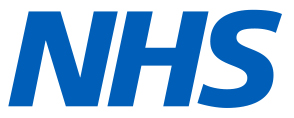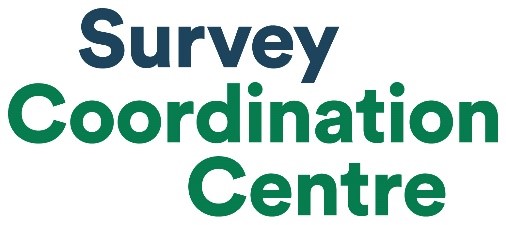About the NHS Staff Survey
The NHS Staff Survey is one of the largest workforce surveys in the world and has been conducted every year since 2003. The survey is a vital component in the NHS approach to employee listening, alongside the National Quarterly Pulse Survey and the monthly People Pulse.
It provides an opportunity for organisations to continuously survey their staff in a consistent and systematic manner. This makes it possible to build up a picture of staff experience, compare and monitor change over time, and to identify variations between different staff groups. Obtaining feedback from staff, and taking account of their views and priorities, is vital for driving improvements in the NHS.
The results are primarily intended to be used by organisations to help review and improve staff experience. The Care Quality Commission use the results from the survey to monitor ongoing compliance with essential standards of quality and safety. The survey supports accountability of the Secretary of State for Health and Social Care to Parliament for delivery of the NHS Constitution.
More information about the NHS Staff Survey is included below and can also be found on the NHS Staff Survey website: https://www.nhsstaffsurveys.com
More information about the survey
Analysis and reporting: For a brief overview of the survey and the reporting outputs available from the NHS Staff Survey 2023, please refer to the basic guide. For help with interpreting outputs produced for 2023, please refer to the Technical Guide. Both guides can be found here: https://www.nhsstaffsurveys.com/survey-documents/.
Participation: All NHS trusts are required to participate in the survey. Integrated Care Boards (ICBs), Commissioning Support Units (CSUs), social enterprises and other organisations can choose to undertake the survey on a voluntary basis. Since 2021, all participating organisations have had to conduct a full census of all eligible staff. A total of 213 NHS trusts participated in the survey as well as 55 additional organisations. Note the total of 213 NHS trusts includes the Isle of Wight NHS Trust and its four different sectors, including acute, ambulance, mental health and community, which are each counted as individual trusts.
Eligibility:All full and part-time staff who were directly employed by the organisation on 1st September 2023 were eligible to participate in the survey. This includes staff on all types of substantive contracts. It also includes some staff on secondment to a different organisation, under certain conditions, and those hosted by the participating organisation if they are on the payroll of the participating organisation. In addition, staff on maternity leave or long-term sickness up to 12 months and staff employed by an NHS organisation working on secondment within another NHS organisation for more than 12 months were also included. For the full list of eligibility criteria please refer to the Sampling Handbook, which is available here.
Sampling: The list of staff eligible to take part in the survey was drawn on 1st September 2023 by each participating organisation.
Fieldwork: Questionnaires and reminders were sent to staff between September and November, 2023. Staff were sent an email with a link to the online survey or a paper invitation along with a paper questionnaire. Paper invitations included a QR link to the online survey. All organisations were required to have a minimum period of 8 weeks during which responses to surveys could be submitted.
Score calculations: Each People Promise element score and theme score is based on two to four sub-scores (except for ‘We are recognised and rewarded’ which has no sub-scores) with each sub-score calculation dependent on the responses given to between one and nine questions.
The People Promise element scores, theme scores and sub-scores are scored on a 0-10 point scale and reported as average scores, where a higher score always equates to a more positive outcome. To achieve a 0-10 point scale for these measures, all responses for the contributing questions are re-scored to fit this scale, so that each question is on the same scale even if they use different response scales within the questionnaire. Details of how the responses are scored for each of the questions is included in section 3 of the Technical Guide, which is available here.
Benckmarking: Organisations are assigned to a benchmarking group based on the services they offer. This means that comparisons are only made between organisations of a similar type and ensures comparisons are fair.
Trusts participating in the survey are assigned to one of the below benchmarking groups depending on the services they provide:
- Acute and Acute & Community Trusts
- Acute Specialist Trusts
- Mental Health & Learning Disability and Mental Health, Learning Disability & Community Trusts
- Community Trusts
- Ambulance Trusts
Benchmarking groups for organisations that participate voluntarily are also detailed in section 5 of the Technical Guide, which can be found here.
Weighting: Despite grouping organisations together based on service provision and occupational group profile, NHS organisations of the same type are still likely to have some differences in the numbers of respondents in each occupational group. For this reason, the data are weighted to account for occupational group differences at organisations within benchmarking groups. Weighting is a form of adjustment to the data itself, with a response given more or less “weight” in an aggregate result (such as an organisation’s results) to help account for the difference in response. What weighting is used, and whether it is used at all, depends on what is appropriate for the results at hand. The Staff Survey presents either weighted or unweighted results accordingly. The weighting procedure limits the impact of occupational group differences on results and works to create a ‘level playing field’.
In order to make one organisation’s scores more comparable with other organisations of the same type, individuals’ scores within each organisation (with the exception of ICBs, CSUs, social enterprises and community surgical services) are weighted so that the occupational group profile of the organisation reflects that of a typical organisation of its type e.g. acute and acute & community trusts.
For comparisons to previous years, the data has been re-weighted according to the 2023 occupation group weights therefore there may be some slight differences in scores from previous years. In addition to the occupation group weights, aggregate results are weighted by the size of the organisation in each year, so that each organisation’s contribution to national, regional and ICS results is based on how large their organisation is, rather than the number of responses they received.
The data are weighted, except for the response rates and those questions where weighting does not apply. Certain questions are not weighted or benchmarked as they ask for demographic or other information, such as age, gender or how many hours a week they are contracted to work.
For more details regarding the different methods used for weighting data please refer to section 6 of the Technical Guide of the Technical Guide, which can be found here.


